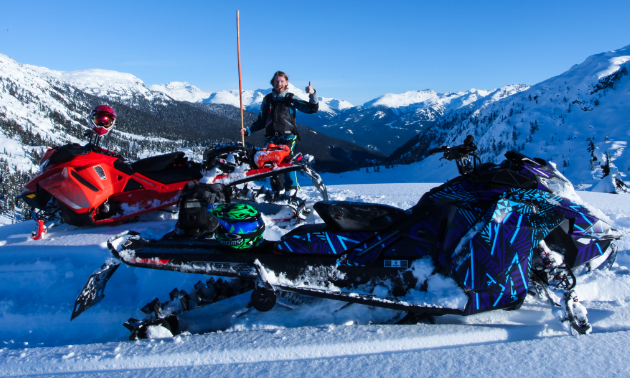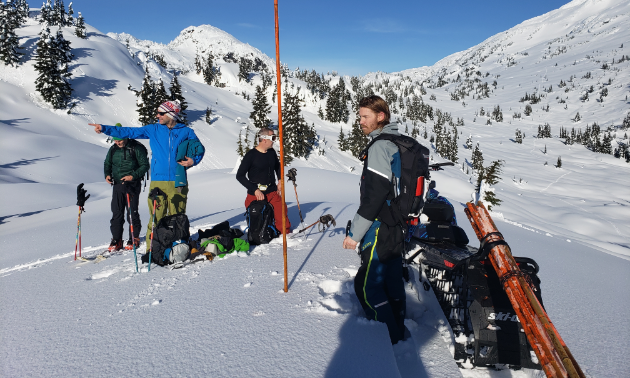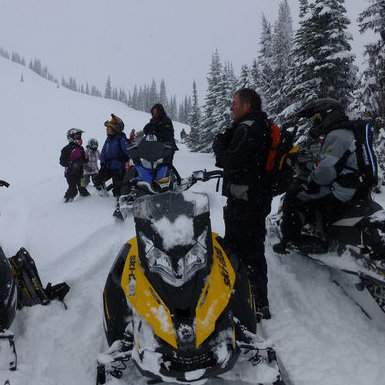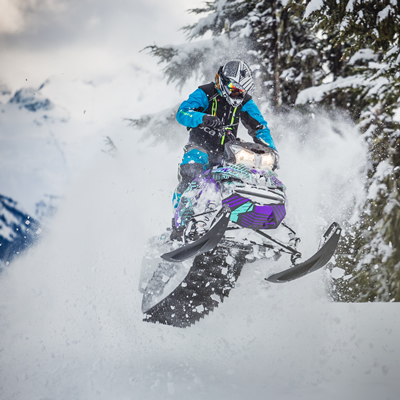Snowmobile trails around B.C. are being scrutinized to a high level lately. Snowmobile clubs and all trail users are being looked upon to be stewards of the land now as much as they’ve ever been. The instinct to fight back against tightening rules is not always the wisest approach, however. Ryan Thorley, leader of Save Sproatt, a group of snowmobilers dedicated to caretaking the Sproatt riding area in Whistler, B.C., has some advice for individuals and clubs that are facing challenging public land use issues.
Save Sproatt formation
In 2012, the watershed area in Sproatt became off limits. The local Recreation Sites and Trails office, part of the Ministry of Forests, Lands, Natural Resource Operations and Rural Development, notified snowmobile clubs that an area outside of their control was going to have limited access to snowmobiling due to reported conflicts between non-mechanized and mechanized users. Since the watershed was not being overseen by anyone, it fell through the cracks of local clubs.
“No one was paying attention to it,” said Thorley. “So myself and a few others thought, ‘If no one is going to do anything about it, we better. We don’t want to lose this riding area.’ So that’s where we decided to jump into action.”

The first thing Thorley and his cohorts identified was what the actual problem was.
“We were ultimately looking at a social issue that was being disguised as an environmental issue,” he said. “We were seeing some infractions of snowmobilers entering the (banned area of the) watershed but that wasn’t really the issue. No one was concerned about the environmental effects. The ski-touring community was getting a bit protective over the snow that was inside the watershed. They were right in saying that snowmobilers weren’t supposed to be in there, but they didn’t care about the environmental factors. It was more, ‘We want the snow. You guys shouldn’t be here.’
“So they started complaining and wrote several letters to our Recs and Trails Department in Squamish saying, ‘Hey, we’re seeing continued tracks.’ The problem was that they were digging up old photos and evidence from all the way back in 2009 to 2012 when it wasn’t properly implemented or publicized that you weren’t supposed to ride in the area. Once we wrapped our heads around what the issue was, we worked on a timeline of excluding mechanized access.
“In early December, we called a combined meeting of local clubs and the general public and filled everyone in on the changes and possible exclusion from riding in the area. We laid it out clean for people. We were the reason for the cause of this problem because we were riding in an area that we shouldn’t. As a community, we can take ownership of the issue, acknowledge the fact that we had done the wrong thing and collectively move forward to move out of the watershed and keep that area alive. Once we had the general public on board, everyone accepted the fact that we generated the problem and it’s up to us to fix it. If we can’t, then we’re going to lose the area.”
Social crimes
Agreement on how to solve a problem is one thing. Implementing a system to keep everyone accountable is another. Save Sproatt put a plan in place to keep snowmobilers away from the forbidden watershed zone.
“If you’re a local rider and find people who enter the watershed, pull them out,” said Thorley. “If they don’t want to come out or don’t care, take a photo of them and report it back to us. Then we’ll contact that person and politely ask them to stay out of our riding areas and they are not welcome to ride the Sea to Sky anymore. If they would not fulfill that, then we will publicly shame them on social media. We had an outstanding result because of that.
“We were looking at an acceptable threshold level of non-compliant riders entering the watershed of equal to or less than five per cent of the total number of riders going through the trailhead. We came through at the end of the season at 99.9 per cent compliancy. We solved the issue that Recs, Sites and Trails were incapable of solving. They didn’t receive any complaints from the non-mechanized user groups this past season.
“We used the snowmobile community to be self-motivated and become self-regulating. Anyone who was found in the watershed was pulled out by a local rider, educated and the problem itself ended up dissolving.”
Installing infrastructure
Not only did Save Sproatt educate the public and help them become self-regulating, the group installed bright orange bamboo poles to clearly mark the lineation of where it was acceptable to ride. They also created a free app for riders to track themselves in real time in relation to the watershed and handed out informational pamphlets outlining the off-limit area with every day-ticket sold.
“We were ultimately very successful because we acknowledged the fact that we weren’t fighting an environmental issue, we were fighting against a social issue,” Thorley said. “We took the fuel out of the fire for the non-mechanized community by keeping track of it. You can submit ride reports and take photos when you ride Sproatt. If we get a conflicting report from a non-mechanized group, we can see photos that were sent in that day and find that there are no tracks in the watershed. We are very active.”
To further solidify Save Sproatt’s approach to the watershed, the group plans to replace the bamboo poles with steel poles for a more permanent boundary line. In the meantime, Save Sproatt continues proactively engaging with all applicable groups in the area.
“We sat down in a meeting with the local Federation of Mountain Clubs of B.C. and the Alpine Club of Canada and showed them our results,” Thorley said. “They didn’t have a whole lot to say.
“During the summer months, there are a lot of trail bike riders and hikers up there. We’re forming relationships with some of the bike and ATV groups within the area to make sure this isn’t just a winter-only effort—it’s a summer effort as well.”






